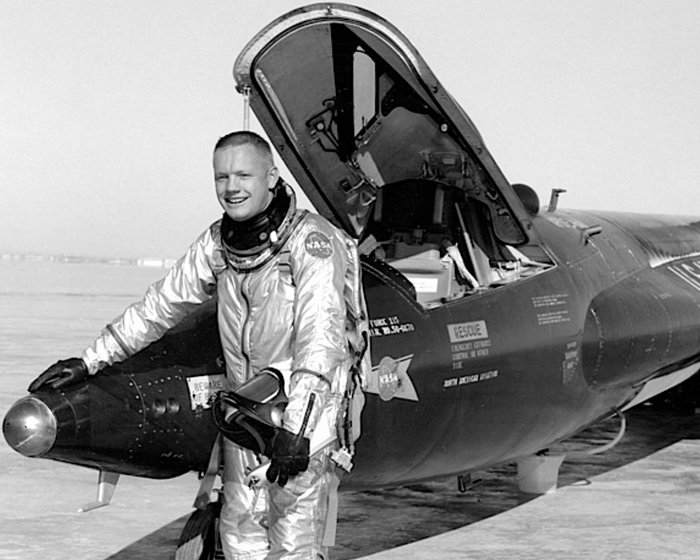X-15: The First Hypersonic Aircraft
The plane that brought America into the Space Age

On August 27, 1939 the first jet engine plane was flown by German test pilot Erich Warsitz. While the technology was available during the Second World War, it was not mass produced, so there were very few non-propeller aircraft on either side. Shortly after the war ended and companies stopped manufacturing goods specifically for troops, there were some advances to the jet engine.
Test pilots from around the country flocked to Edwards Air Force Base in Southern California to try out the new aircraft being developed by the military. From 1959 to 1968, twelve pilots flew three different planes on a total of 199 flights.
The X-15 was the first aircraft to reach speeds of Mach 4, 5, and 6. Additionally, it was the first to successfully maneuver and function at altitudes above 100,000 feet. According to NASA, outer space starts at 50 miles above the Earth’s surface. Out of the twelve total pilots, eight of them flew above that and were officially deemed astronauts by the U.S. government.
How It Was Developed
Starting the design process in the mid-1950s, the engineers behind the X-15 certainly had a challenging task. More or less, the X-15 was essentially a rocket with wings attached to the side.
Being one of the first jet engine aircraft in the world also presented its fair share of difficulties. Numerous engine tests were done, with one resulting in a catastrophic explosion. Luckily, for the pilot who was in the plane at the time he was able to get out of the cockpit safely and unharmed.
Engineers also had to take into account that when the X-15 did reach higher altitudes with less air than at sea level, there would be significantly less air resistance. This meant that the rudders and ailerons on the plane would be deemed essentially useless at altitudes above 200,000 feet, or about 37.9 miles high.
To get around this, there were small holes in the exterior of the aircraft that could emit hydrogen peroxide. These provided the necessary pitch and yaw control for the pilots to steer back towards the ground safely.
Similar to the space shuttle, the X-15 had a small heat shield on the bottom of the fuselage to protect against the high temperatures that resulted from reentry into Earth’s atmosphere.
How It Flew
Because the X-15 had just one singular rocket engine and skids in place of wheels as landing gear, it could not take off by itself. Therefore, it needed a massive Boeing B-52 plane to carry it to an altitude of roughly 45,000 feet. From there, the test pilot would start the engines and the X-15 would detach from the underside of the B-52.

Soon after checking that all systems were working nominally, the pilot would raise the throttle, and the X-15 would quickly accelerate, while the B-52 flew back down towards the runway.
Because the engine of the X-15 had so much sheer power, it could not run for very long. Most engines ran for about 10 minutes before running out of fuel. The tricky thing was that the pilots had to make sure they weren’t at too high of an altitude when the fuel did run out, because if they didn’t have any fuel they may not be able to descend, and end up bouncing off the atmosphere.
While very rare, occurrences like this did happen. Undoubtedly the most famous of which was when future NASA astronaut Neil Armstrong was focusing all his attention on the G-Meter, trying to break the record of 5 times the Earth’s gravitational force.

While he was doing so, he did not realize how steep his ascent was, and before he knew it he was much higher than previously anticipated. Luckily for Neil, he was able to keep his cool under pressure and use the hydrogen peroxide vents to orient the aircraft to face downwards, and he ended up landing safely.
Conclusion
The X-15 Program could be considered a sort of precursor to the American Space Shuttle Program. While it didn’t involve as many people and it didn’t operate for as long, it still made many crucial advancements to the field and science as a whole.
Throughout the whole program, there was only one accident that resulted in the fatality of a crew member, along with the destruction of one of the planes. The two X-15 aircraft that are still intact have been on display at various museums across the United States, including the National Air and Space Museum and the National Museum of the United States Air Force.
To this day, the North American X-15 is still the fastest plane in history, beating even the supersonic spy planes of today such as the SR-71 Blackbird and the F-117 Nighthawk.
Many of the X-15 test pilots went on to accomplish even more remarkable achievements in their careers, and a good amount transferred to NASA after the program ended.
Overall, it would be an understatement to say that the X-15 program made significant contributions to future space flight and technology. It was truly the building blocks for success that NASA needed to have backing the Mercury, Gemini, and Apollo missions. The X-15 set numerous records in altitude and speed, and will forever be remembered as truly revolutionary for the contributions it made to manned spaceflight and exploration.
